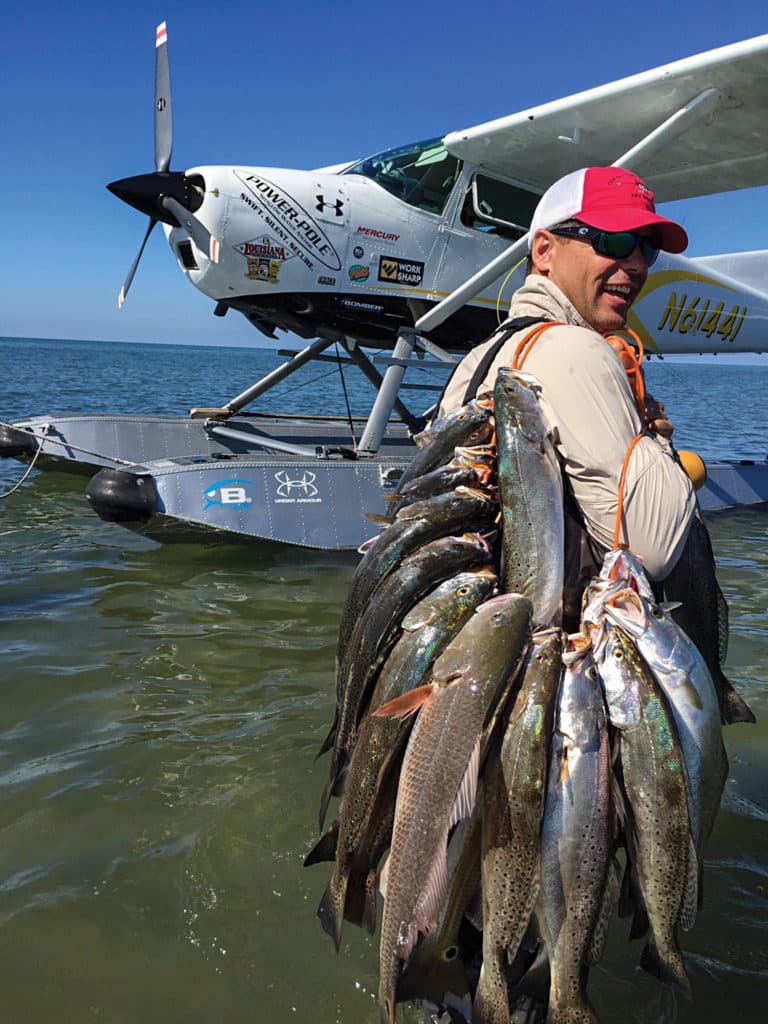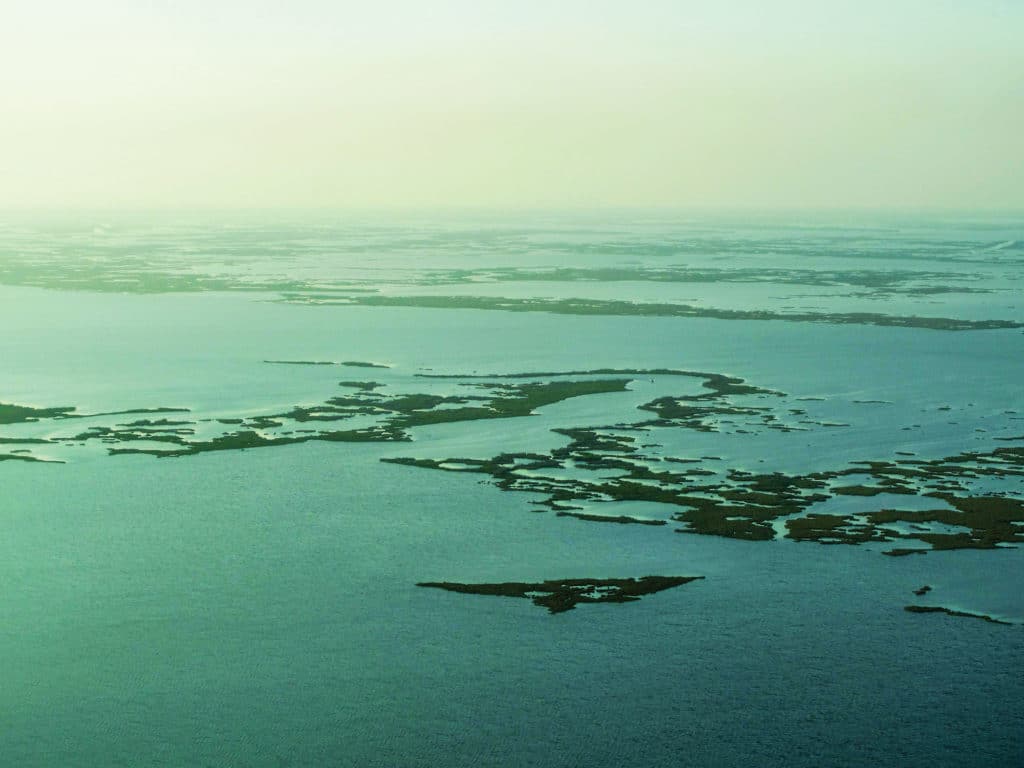
As we started our descent, one of the wings dipped, and a narrow strip of sand and shells came into view from the starboard window. Gentle waves lapped along its outer edge, and, on the lee side, long, dark shadows swam just beyond the meandering shoreline. “That’s what we’re looking for,” Capt. Darrin Helmer declared from the rear passenger seat.
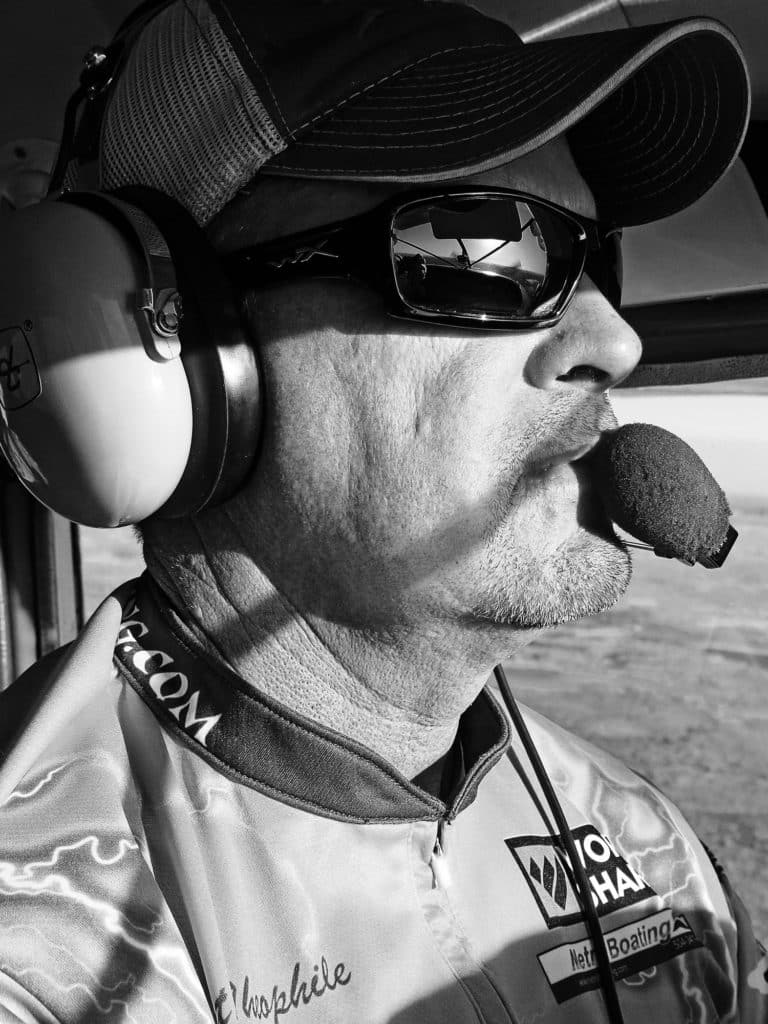
“Gents, welcome to the Chandeleurs. The local time is 9:15 central. Please check your seat pockets for any personal items you may have brought on board and be careful when opening the overhead bins as items may have shifted in flight. Baggage can be claimed right outside the main cabin door.”
Capt. Theophile Bourgeois, our pilot and guide, said facetiously.
After skillfully easing the Cessna 185 floatplane down to the water for a soft touchdown, he taxied slowly toward the island and, in his playful Cajun accent, added, “Thanks for flying Cajun Airways, now let’s go catch us some bull reds!”
Shortly after Bourgeois staked off the plane in 3 feet of water, we grabbed our gear, slipped into the cool, emerald water, and started our trek in our neoprene waders. Within 40 yards, a large circle of surface ripples tipped off the fish’s presence. We all cast into the sphere and instantly hooked up brawny bull reds that pushed 40 inches in length. And to our delight, the scene became a continuous loop that kept repeating for the next few hours.
TRAVELOGUE
With the Chandeleur chain located within a 50-mile radius of his home base in Lafitte, Louisiana, Bourgeois makes the half-hour flight to the barrier islands several times a week. Depending on the wind and weather, the Chandeleurs and Gosier Island are the primary destinations, with Timbalier Island as a third option.
Redfish prowl the warmer shallows surrounding the string of uninhabited islands — many are oversize fish schooled up by the hundreds. The sheer number makes competition for food pretty intense, and it’s common for several fish to chase after the same lure. Double and triple hookups are the norm, as I quickly discovered. In late March or early April, trout show up as the water warms, and, along with resident slot-size reds, they fill the void when the bulls move out.
Trips to the islands are based on the whims of Mother Nature. Bourgeois flies there any time of year if the conditions are right, including winter when the bull reds congregate. “In February cold fronts blow through on a regular basis, and with a north wind the choices are limited,” he explains. “But two days after a front, we get bluebird skies with calm winds and seas. The wind shifts to the east, then southeast, and when that happens I can go anywhere I want.”
Bourgeois can accommodate three anglers in his plane, and he has a second pilot/guide with 35 years experience on standby who can manage four more in his Cessna 206. Quality tackle is provided or you can bring your own. Just be aware that, with winter water temperatures in the low 60s, waders are a necessity.
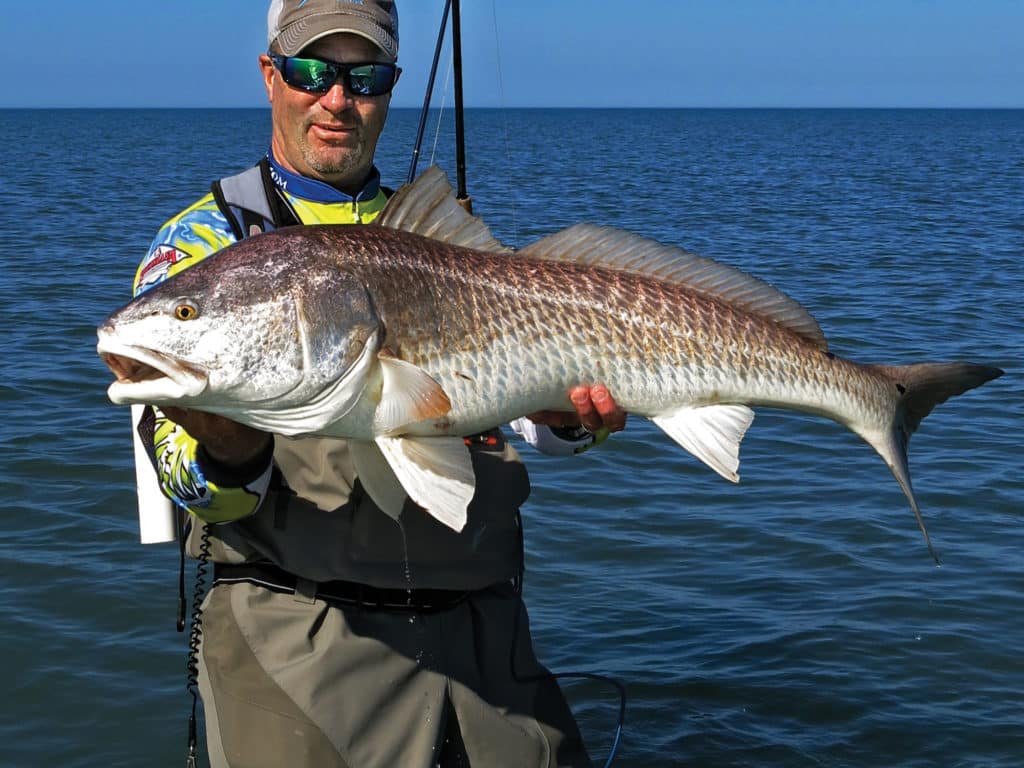
BE READY
PRIME DESTINATION
The Chandeleurs are Louisiana’s easternmost point. While mostly reduced to shoals by the combined effects of Hurricanes Dennis and Katrina in 2005, these fragmented islands are still an important stop for many migrating birds, and the surrounding grass, sand and shell bottoms are prime habitats for crustaceans and juvenile finfish, which, in turn, attract a variety of game fish, including speckled trout, redfish, flounder, monster jack crevalle and bluefish. Of course, the trout and reds are the big draw, and the latter are especially large and abundant during the colder months.
With long stretches of sand and shells along the shallows, much of the bottom is plenty firm for wading and light enough for sight-fishing. Polarized sunglasses with lenses in copper or amber tints are essential to cut the glare and heighten contrast. But with the reds ranging in size from 8 to 40-plus pounds, their wakes are not difficult to pinpoint. And neither are the big bronze backs bouncing off your kneecaps. To my amazement, such close encounters with big reds are fairly routine when wading the shallow water surrounding the Chandeleur Islands.
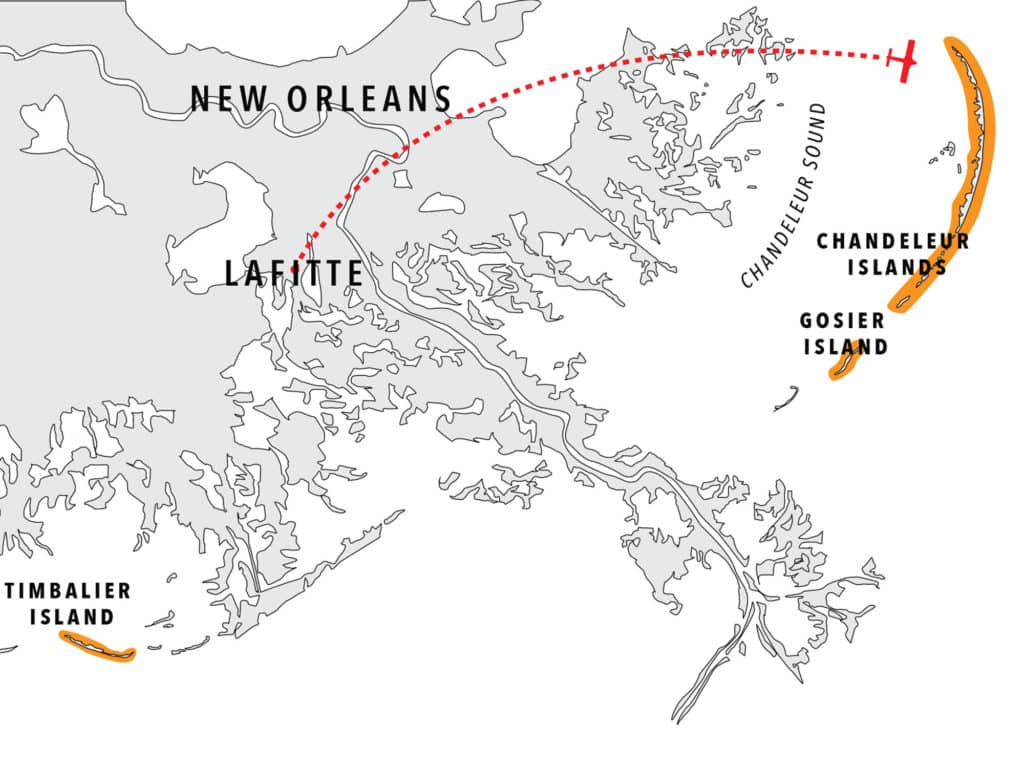
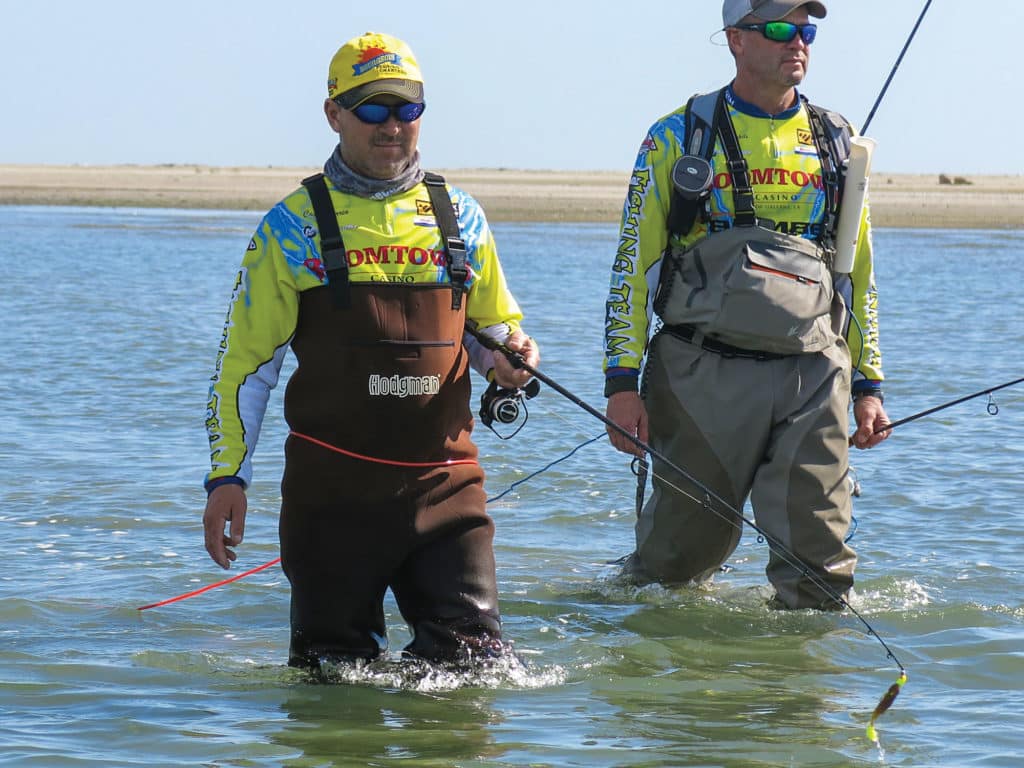
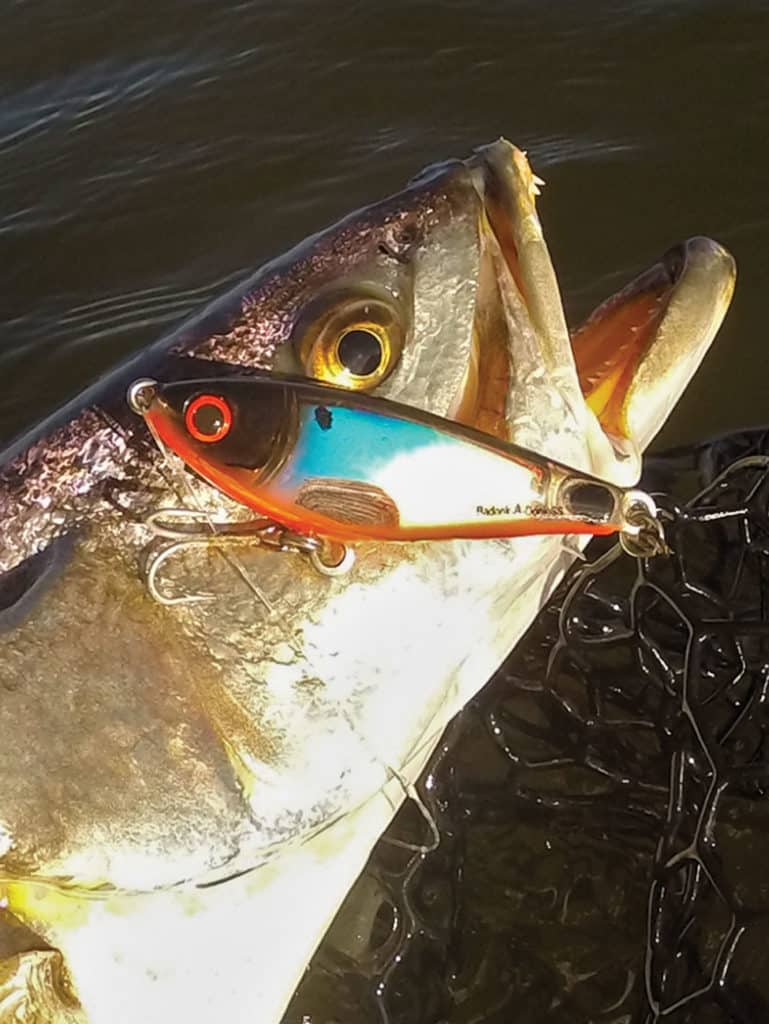
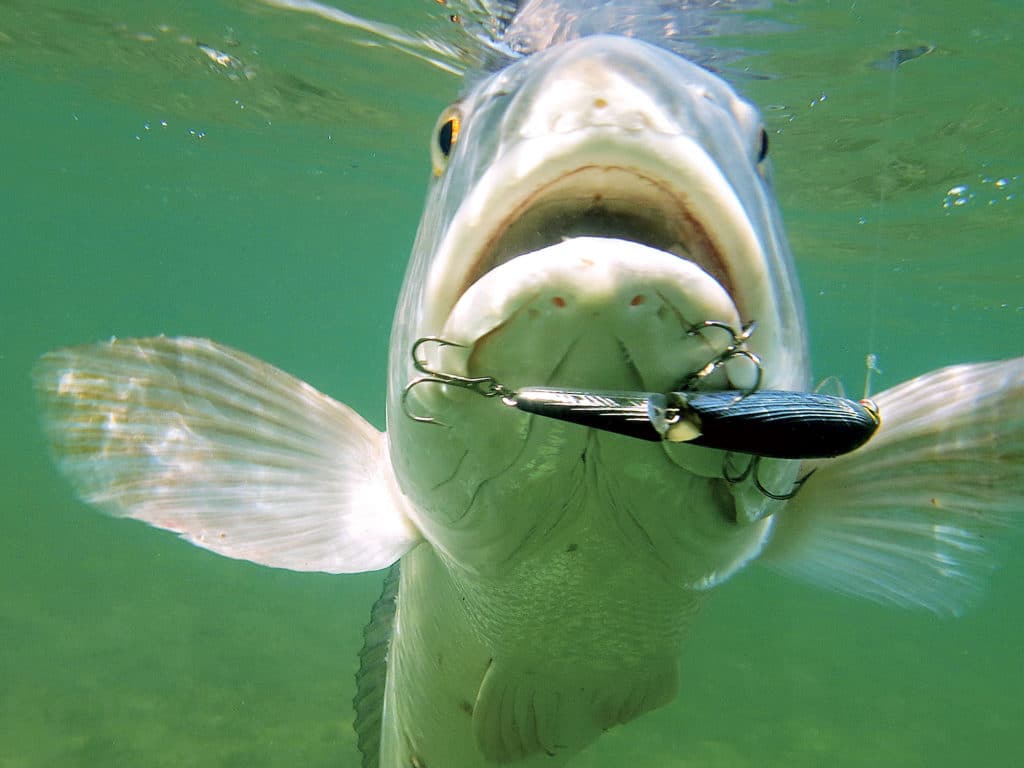
PILOT’S PICKS
For both redfish and trout, Bourgeois likes cocahoe imitations like the Yum Mud Minnow on 3⁄8- to ½-ounce jig heads. He prefers them in black or dark color patterns, like watermelon or avocado, but they must have chartreuse tails. Half-ounce gold weedless spoons are another favorite. And if the weather is mild, Bourgeois says a bone-colored Bomber Badonk-A-Donk HP triggers explosive surface strikes. He claims the high pitch of the rattles inside this topwater lure is just as effective on specks as it is on reds. “I’ll give up 10 fish to get a big one on a topwater. It’s so cool to see a bull red hump up behind the plug and crush it. There’s nothin’ better, Cuz,” Bourgeois says.
“For fly-fishing, I use an 8-weight rod and a reel loaded with a 9-weight floating line,” Bourgeois adds. “Since we’re sight-fishing, that makes it easier to pick the line back up and cast again quickly. Shrimp, crab and spoon fly patterns all work well around the islands.”
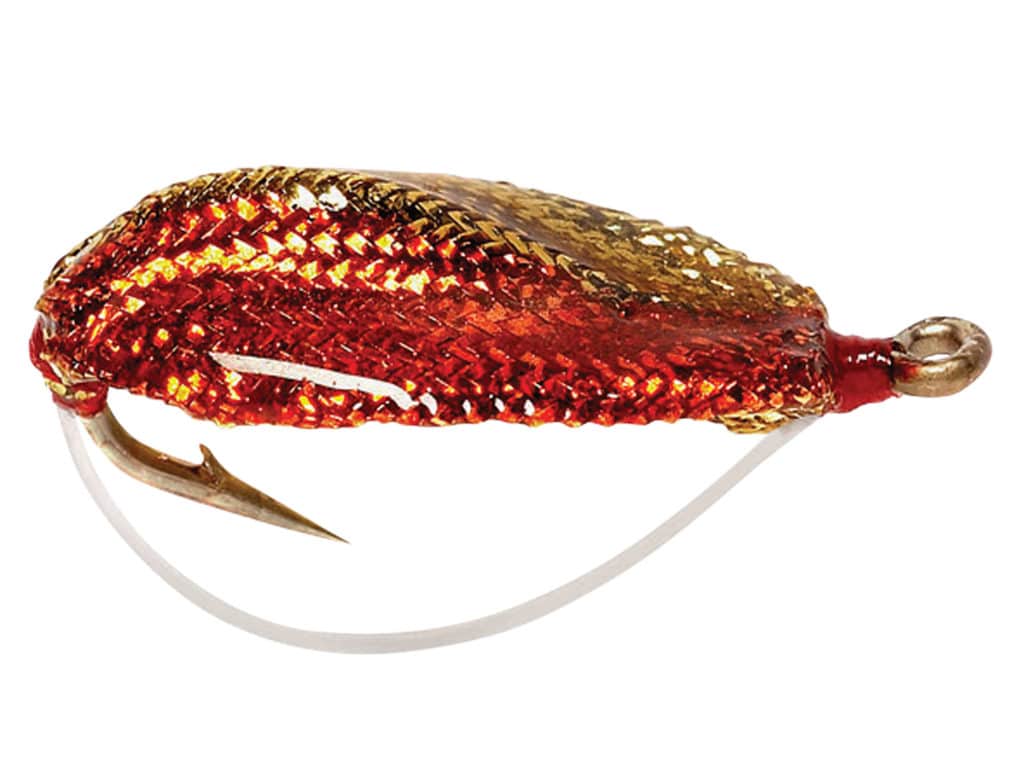
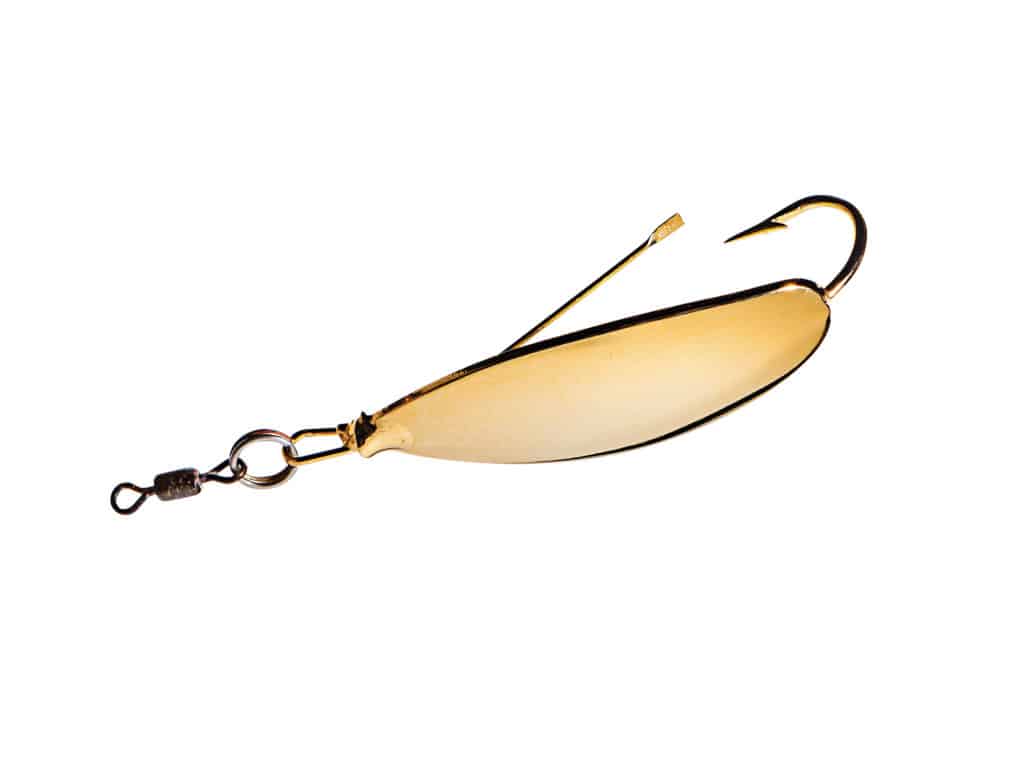
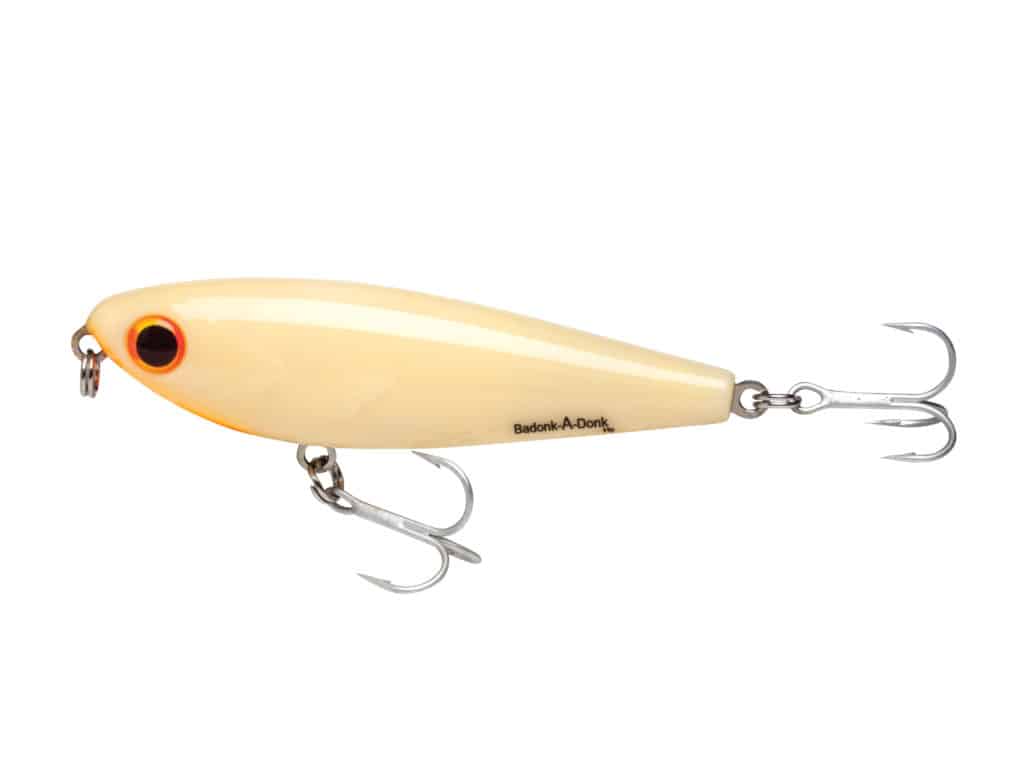
Top Producers
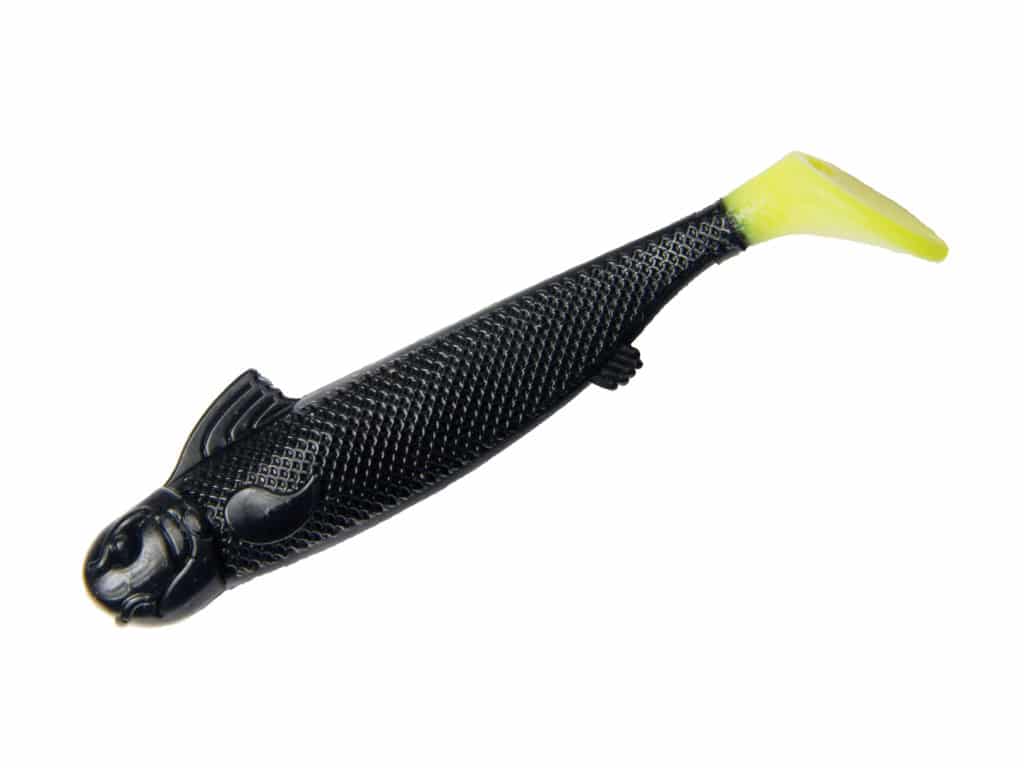
“After four hours your ass is ready to get back on the plane,” Bourgeois says with a laugh. “It’s a workout for sure, but a fun one.”
FINAL APPROACH
With an average flight time of 30 minutes, anglers enjoy maximum fishing time during a typical six-hour day trip. But trudging through thigh-deep water, battling stubborn bulls, can be taxing. “After four hours your ass is ready to get back on the plane,” Bourgeois says with a laugh. “It’s a workout for sure, but a fun one.”
In this age of long security lines, full-body scanners and cattle-car crowding, air travel has lost some of its appeal. But when you can disembark after a half-hour and step into water teeming with bruiser reds, it all changes. I know I’ll be racking up those frequent flier miles on Cajun Airways
